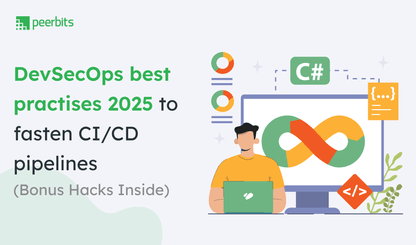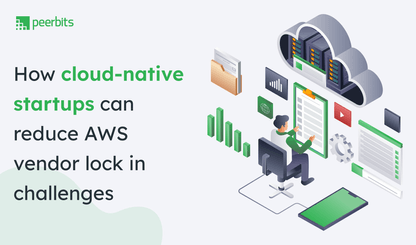Healthcare generates massive volumes of patient records, images, and remote monitoring data. Traditional systems often can’t keep pace, which is why cloud computing in healthcare is becoming a go-to choice.
By using cloud based healthcare solutions, providers gain flexibility, easier collaboration, and advanced analytics, though security and compliance remain ongoing concerns.
What is cloud computing in healthcare?
Cloud computing in healthcare uses internet-based services to store, manage, and process medical data, replacing traditional on-premise servers.
It lets providers securely access and share patient records, images, and other information while improving scalability and collaboration.
Still, the advantages of cloud computing in healthcare, like lower costs and real-time access, come with disadvantages such as security risks and compliance challenges.
Read more: Top 10 Healthcare Technology Trends for the Future
Importance of cloud computing in healthcare
Cloud computing is a revolutionary technology that has significantly impacted the healthcare industry. Its benefits are numerous, and some of them include;
- Improved collaboration and communication
- Cost savings
- Increased accessibility & flexibility
- Better data security & disaster recovery
- Scalability & Efficiency
However, understanding just the points of importance is not enough; it is crucial to delve into the intricate details of how these benefits materialize.
There are several pros and cons to using cloud technology in healthcare software development. Some of the main advantages include:
Pros of cloud computing in healthcare
The core reason for the digitalization in the healthcare industry is its unique value proposition. To explore this, we will analyze the pros of using cloud computing in healthcare.
Improved collaboration and communication
Improved collaboration and communication are major benefits of cloud computing in healthcare. It gives professionals access to patient records and critical data anytime, anywhere, making information sharing easier and supporting better decision-making.
Cost savings
Cloud based healthcare solutions brings cost savings by cutting the need for expensive hardware and software. With cloud-based tools and a pay-as-you-go model, providers only pay for the resources they use, reducing upfront investment and ongoing expenses.
Increased accessibility and flexibility
Cloud computing in healthcare improves accessibility and flexibility by giving providers secure access to patient records and data anytime, anywhere with an internet connection. This supports remote care and smoother collaboration across teams.
Better data security and disaster recovery
Cloud computing strengthens security and disaster recovery for healthcare providers. Patient data is stored in secure, redundant centers with quick restoration after failures. For healthcare app development, this reliability builds trust and keeps critical services running.
Scalability and efficiency
A key advantage of cloud computing in healthcare is scalability and efficiency. Providers can quickly scale IT resources up or down to meet changing demands. Compared to on-premise systems, cloud solutions save time and costs while keeping operations flexible.
Did you know?
The global healthcare cloud computing market was valued at $39.4 billion in 2022 & is expected to reach $89.4 billion by 2027 at a CAGR of 17.8% from 2022 to 2027. (Source)
Cons of cloud computing in healthcare
While there are many advantages to using cloud computing in healthcare, there are also some potential drawbacks to consider. Here are some of the cons of using cloud computing in healthcare:
Privacy and security concerns
One of the primary concerns with cloud computing in healthcare is data privacy and security. Healthcare providers must ensure that patient data is protected from unauthorized access, theft, and cyber-attacks.
Additionally, healthcare providers must ensure that cloud service providers comply with all relevant data privacy and security regulations.
Dependence on technology
Using cloud computing in healthcare requires healthcare providers to be dependent on technology. This means that any downtime or service interruptions could significantly impact patient care.
Additionally, healthcare providers must ensure that they have the necessary technical expertise to manage and maintain their cloud-based tools.
Potential downtime and service interruptions
Cloud computing is not immune to downtime and service interruptions. Healthcare providers must ensure that they have a plan in place to minimize the impact of downtime on patient care.
Additionally, healthcare providers must ensure that they have the necessary technical support to quickly resolve any issues that arise.
Limited control over data management
With cloud computing, healthcare providers must rely on cloud service providers to manage and store patient data. This means that healthcare providers have limited control over data management.
Additionally, healthcare providers must ensure that they have a plan in place to retrieve their data if they decide to switch to a different cloud service provider.
Regulatory compliance challenges
Healthcare providers must comply with numerous data privacy and security regulations, such as HIPAA and GDPR. Using cloud computing in healthcare can introduce additional regulatory compliance challenges, as healthcare providers must ensure that cloud service providers comply with all relevant regulations.
Read more: Digital Transformation in Healthcare: Key Challenges & Their Solutions
Case studies
To better understand the real-world impact of cloud computing in healthcare, it is important to examine case studies of cloud computing in healthcare.
Nursing case study examples, for instance, can provide critical insights into how technology impacts patient care and treatment outcomes.
These examples highlight both the successes and challenges healthcare organizations face when implementing cloud technology
Change Healthcare
In February 2024, Change Healthcare experienced the largest data breach of the year, affecting 100 million individuals. The BlackCat ransomware group encrypted files after stealing sensitive health data, accounting for over half of the year’s breached records.
Despite paying a $22 million ransom, the data was leaked further, causing additional extortion attempts. The attackers exploited a Citrix portal without multifactor authentication, exposing critical gaps in the company’s cybersecurity practices and highlighting risks of system consolidation.
Kaiser Foundation Health Plan
In April 2024, Kaiser Foundation Health Plan faced a data breach affecting 13.4 million individuals due to tracking technologies on its platforms. These tools transmitted sensitive data to third parties, leading to HIPAA compliance violations.
The breach led to updates in regulations requiring stricter use of tracking tools, particularly on patient engagement software. It underscored the importance of maintaining privacy and securing data on unauthenticated pages.
Ascension health
Ascension Health suffered a ransomware attack in May 2024, resulting in a four-week EHR outage and exposing data of 5.5 million patients. Hackers exploited a malicious file downloaded by an employee.
This incident underlined the importance of proactive cybersecurity strategies and employee training. It demonstrated how unguarded systems can expose organizations to significant operational and reputational risks.
HealthEquity
In March 2024, HealthEquity detected unauthorized access to SharePoint via a vendor's compromised device, exposing data of 4.3 million individuals. Sensitive information related to HSAs was leaked.
The breach highlighted the need for securing vendor devices and access credentials. It underscored how third-party vulnerabilities could pose significant threats to healthcare organizations.
Concentra health services
In 2023, Concentra Health Services was affected by a breach through its transcription provider, PJ&A, compromising nearly 4 million records. However, Concentra’s internal systems remained secure.
This incident revealed the risks third-party vendors pose to healthcare data. It stressed the importance of closely monitoring external service providers to safeguard patient information.
Best practices for cloud computing in healthcare
To maximize the benefits of cloud computing while mitigating the risks, healthcare providers should follow best practices that include:

Selecting the right cloud service provider
When choosing a cloud service provider, healthcare providers should consider factors such as their experience in healthcare, data privacy and security policies, compliance with relevant regulations and standards, scalability, and reliability. It is also important to conduct due diligence on the provider's track record and performance.
Ensuring data privacy and security
Healthcare providers must ensure that their data is secure and protected when using cloud computing. This includes measures such as encrypting data, restricting access to sensitive information, and monitoring for unauthorized access or breaches.
Conducting regular risk assessments
Healthcare providers should conduct regular risk assessments to identify potential security threats and vulnerabilities. This includes identifying and assessing risks to data privacy and security, as well as risks to service availability and performance.
Developing a disaster recovery plan
Healthcare providers should have a disaster recovery plan in place to ensure that they can recover critical data and systems in the event of a disaster or service interruption. This includes regular backups and testing of the recovery plan.
Complying with relevant regulations and standards
Healthcare providers must comply with various regulations and standards related to data privacy, security, and compliance. This includes regulations such as HIPAA and GDPR, as well as standards such as ISO 27001 and NIST.
Conclusion
Cloud computing in healthcare brings clear benefits such as collaboration, flexibility, accessibility, and stronger data security. At the same time, providers must deal with concerns around privacy, compliance, and reliance on third-party technology.
Learning from case studies can help organizations make informed decisions and avoid costly mistakes. Looking ahead, cloud adoption will continue to shape innovation and play a key role in improving patient care.








